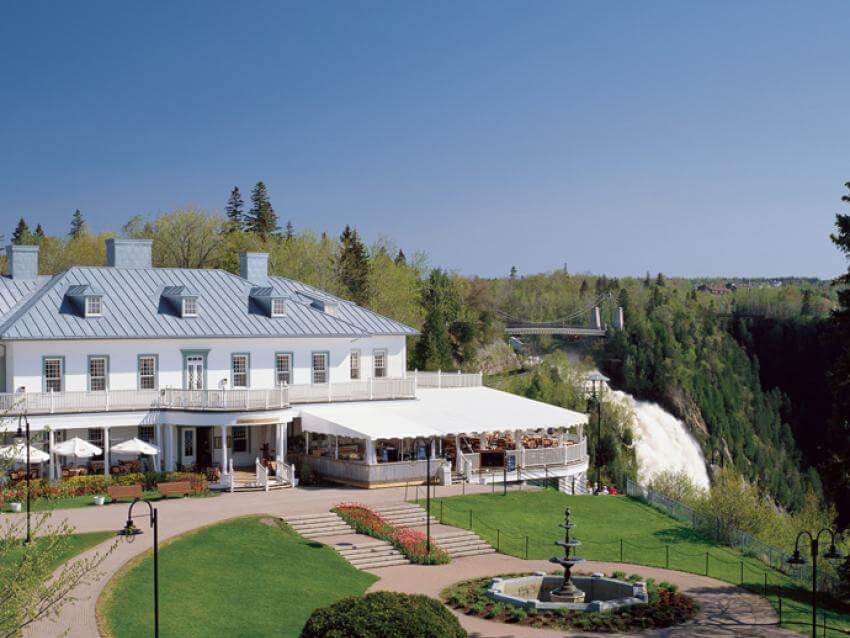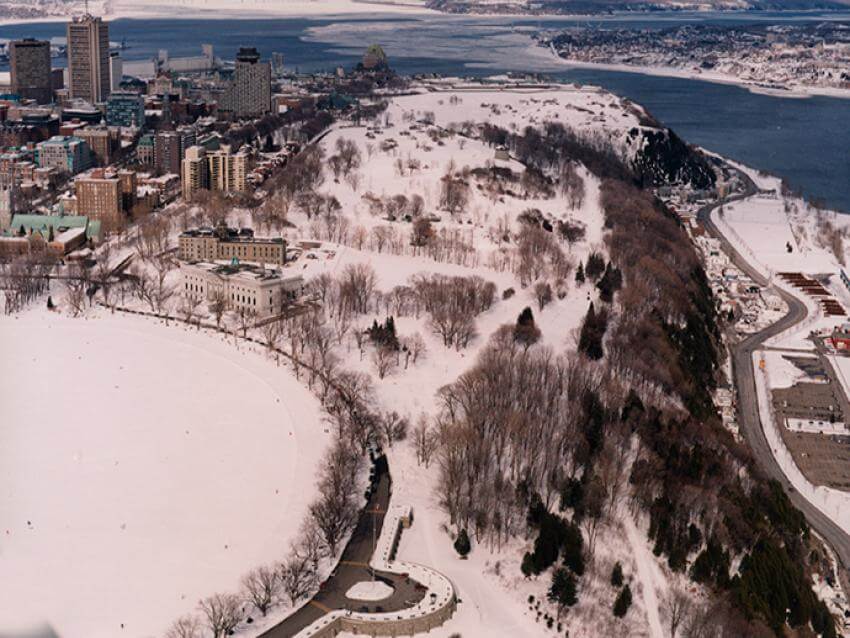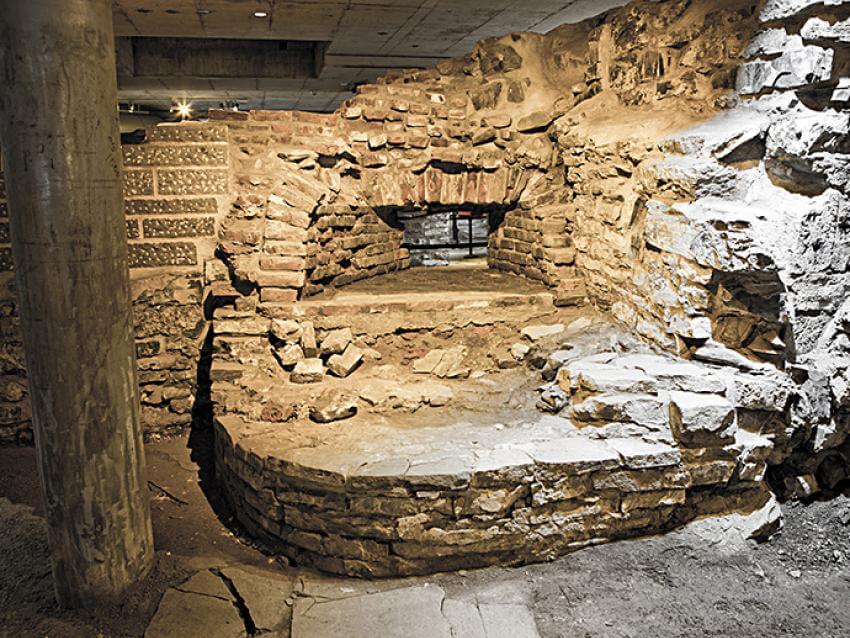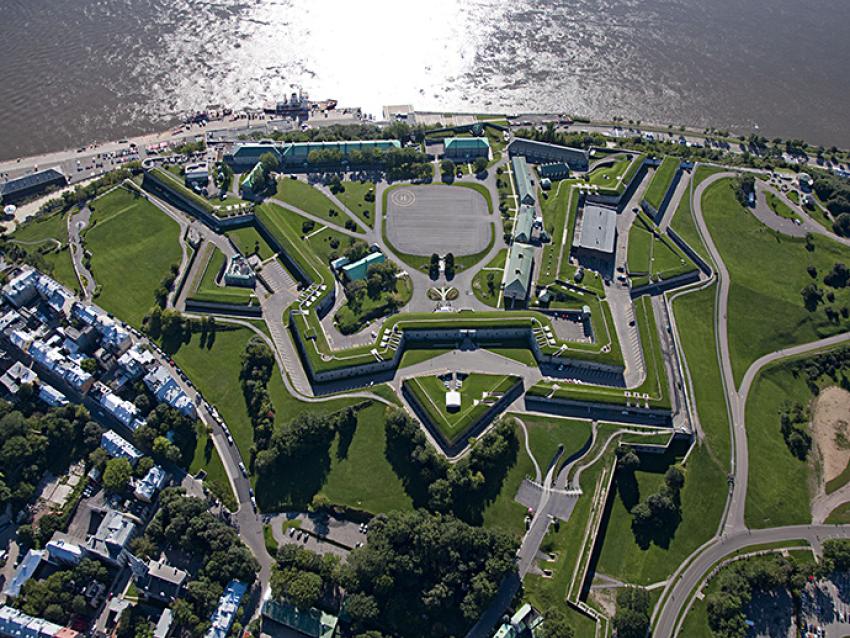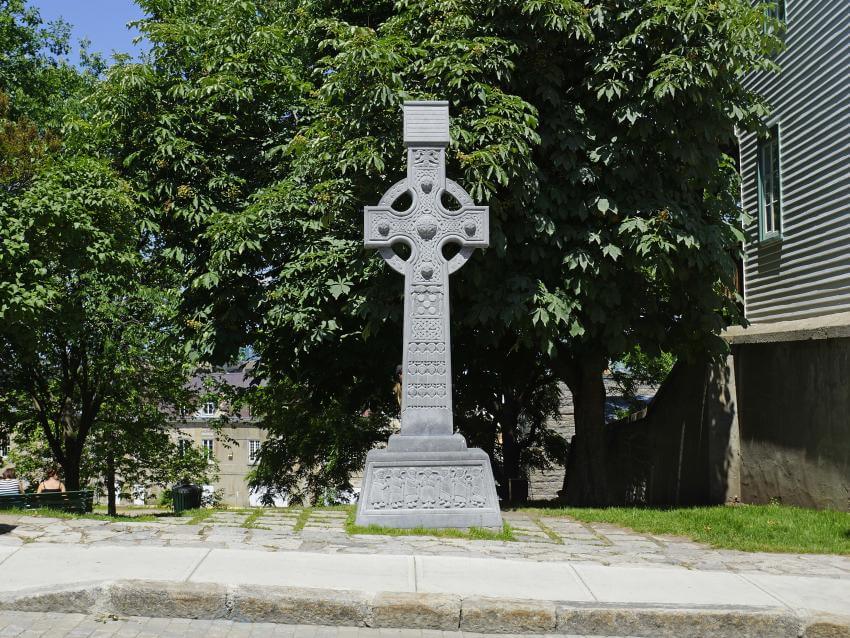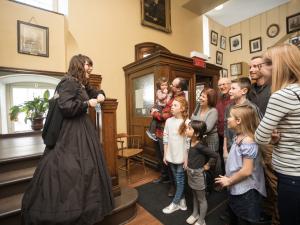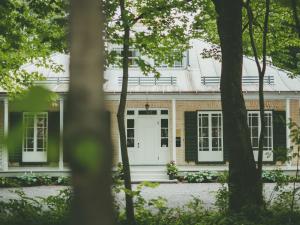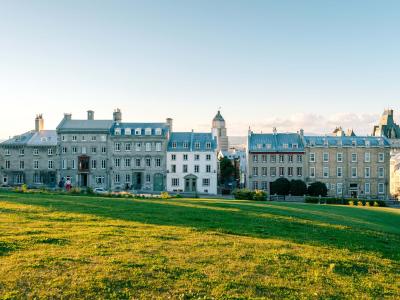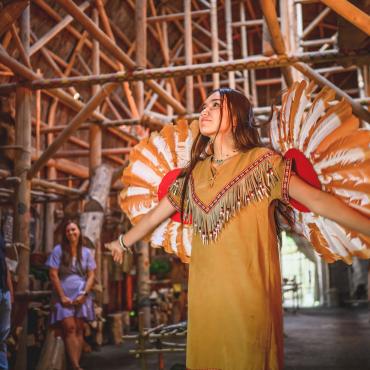15 Sites Witness to our British and Irish Heritage


1760. New France came under British rule with the end of the Siege of Québec and the famous 1759 clash between Montcalm’s French Army and General Wolfe’s English forces, known as the Battle of the Plains of Abraham.
The British Regime had a powerful influence on the history, architecture, defensive system, and urban fabric of Québec City. Come explore this rich heritage!
- Attractions
Attractions
 Parc de la Chute-Montmorency
Parc de la Chute-Montmorency Parc de la Chute-Montmorency
Parc de la Chute-Montmorency Parc de la Chute-Montmorency
Parc de la Chute-Montmorency Parc de la Chute-Montmorency
Parc de la Chute-Montmorency Parc de la Chute-Montmorency
Parc de la Chute-Montmorency Parc de la Chute-Montmorency
Parc de la Chute-Montmorency
1Parc de la Chute-Montmorency
British Heritage
Site where General Wolfe’s British troops camped in the lead-up to the famous Battle of the Plains of Abraham.
DON’T MISS:
- The spectacular 83-metre-high waterfall
- The remains of Wolfe’s redoubt dating to 1759
- Manoir Montmorency, formerly known as Kent House in honour of Prince Edward, Duke of Kent (father of Queen Victoria), who stayed there and hosted high-society receptions between 1791 and 1794
- The permanent exhibition in the Manoir Montmorency about the history of the falls, the house and its inhabitants over the centuries
 Plaines d'Abraham, Luc-Antoine Couturier
Plaines d'Abraham, Luc-Antoine Couturier Commission des champs de bataille nationaux
Commission des champs de bataille nationaux Plaines d'Abraham, Luc-Antoine Couturier
Plaines d'Abraham, Luc-Antoine Couturier Commission des champs de bataille nationaux
Commission des champs de bataille nationaux Plaines d'Abraham, Luc-Antoine Couturier
Plaines d'Abraham, Luc-Antoine Couturier Commission des champs de bataille nationaux
Commission des champs de bataille nationaux
2Plains of Abraham
British Heritage
Site of the 1759–1760 clashes between French and British forces and the British victory that changed the fate of North America.
DON’T MISS:
- The magnificent historic urban park
- 2 of the city’s Martello towers. These round stone towers were built by the British in the early 19th century, to ward off possible American attack
- The immersive projection of the 1759 and 1760 battles of the Plains of Abraham
 Site patrimoniale du Parc-de-l'Artillerie, Parcs Canada
Site patrimoniale du Parc-de-l'Artillerie, Parcs Canada
3Artillery Park
British Heritage
Royal Artillery Regiment Headquarters until 1871 and strategic site of various defensive works, both French and British.
DON’T MISS:
- The 3 historic buildings: the Dauphine Redoubt (1712), the officers’ quarters (1818), and the foundry of the Dominion Arsenal (1901)
- Guides in period costume personifying the former inhabitants of this historic site
- The large scale model built for the British Military between 1806 and 1808, showing the urban and military layout of Québec City at the time
 Québec City Tourism
Québec City Tourism
4Fortifications of the Old City
British Heritage
The walls and gates surrounding most of the Old City were built for defence by the French in the 17th and 18th centuries and improved by the British in the 18th and 19th centuries. Québec is the continent’s only remaining fortified city north of Mexico, for which it has been declared a UNESCO World Heritage Site.
DON'T MISS:
- The amazing views from the 4.6 km of walls that encircle the Old City
- The insights of Fortifications of Québec National Historic Site interpreters as they explain Québec’s defensive system
 Lieu historique national des Forts-et-Châteaux-Saint-Louis
Lieu historique national des Forts-et-Châteaux-Saint-Louis
5Saint-Louis Forts and Châteaux National Historic Site
British Heritage
This wooden promenade, built on the former site of Château Saint-Louis, is located at the foot of the renowned Fairmont Le Château Frontenac.
DON’T MISS:
- The archaeological site containing vestiges of the official residence where, for over 200 years, French and British governors made decisions critical to the history of all of North America
 St. Matthews Cemetery, Chantal Gagnon
St. Matthews Cemetery, Chantal Gagnon
6Saint Matthew’s Cemetery
British Heritage
Québec’s first protestant cemetery (1771).
DON’T MISS:
- The urban cemetery converted into a neighbourhood park
- Gravetones of governors, military officers, fur traders, sailors, shipbuilders, craftsmen that tell the story of life in Québec City in the 18th and 19th centuries
- The free iPhone historian-guided tour app from the App Store
 Cathédrale Holy Trinity
Cathédrale Holy Trinity Jean-François Bergeron, Enviro Foto
Jean-François Bergeron, Enviro Foto Cathédrale Holy Trinity
Cathédrale Holy Trinity Jean-François Bergeron, Enviro Foto
Jean-François Bergeron, Enviro Foto Cathédrale Holy Trinity
Cathédrale Holy Trinity Jean-François Bergeron, Enviro Foto
Jean-François Bergeron, Enviro Foto
7Cathedral of the Holy Trinity
British Heritage
The first Anglican cathedral to be built outside the British Isles was constructed between 1800 and 1804. Designed by British Artillery officers and modelled on the famous church St Martin-in-the-Fields in London.
DON’T MISS:
- The King's Gift: an exhibition of the superb silver Communion Service given to the Cathedral by King George III
- The Royal pew, with the Arms of King George III
- Monuments to British officers and aristocrats, including the Duke of Richmond, who gave the famous ball before the Battle of Waterloo
- A very rare English chamber organ, built in 1790 in London
- The fine stained-glass windows, many of which were made in London
 St. Andrew's Presbyterian Church, Guy Lessard
St. Andrew's Presbyterian Church, Guy Lessard
8St. Andrew’s Presbyterian Church
Scottish Heritage
The oldest congregation of Scottish origin in Canada (est. 1759).
DON’T MISS:
- The Governor's gallery formerly reserved for the Governor of Canada
- The wooden box pews, arranged in a semi-circle around the pulpit
- Official reproductions of Flags of the Fraser Highlanders
- The First Organ (Harmonium) used in Worship over 100 years ago
- The pipes and drums of the 78th Fraser Highlanders historical society, who rehearse in the church every Thursday night, carrying on a Scottish tradition
 Citadelle de Québec
Citadelle de Québec Citadelle de Québec
Citadelle de Québec Citadelle de Québec
Citadelle de Québec Citadelle de Québec
Citadelle de Québec Citadelle de Québec
Citadelle de Québec Citadelle de Québec
Citadelle de Québec
9Citadel of Québec
British Heritage
The largest fortress built by the British in North America and the Governor General of Canada’s official residence.
DON’T MISS:
- A National Historic Site of Canada, constructed by the British between 1820 and 1831
- Traditional changing of the Guard by the Royal 22e Régiment in scarlet tunics and bearskins, a ceremony held in only 4 locations worldwide: London and Windsor in England and Ottawa and Québec City in Canada
- The Museum of the Royal 22e Régiment
 Parcs Canada
Parcs Canada
10Grosse Île and the Irish Memorial National Historic Site
Irish Heritage
The Port of Québec’s quarantine station from 1832 to 1937—in its day the principal gateway for immigrants arriving in Canada.
DON’T MISS:
- Re-living the experience of the immigrants, mainly from Ireland, who crossed the ocean in search of a brighter future
- The cemetery and the Celtic Cross which commemorate more than 5000 Irish immigrants who died of Typhus on Grosse Île in 1847-1848, while fleeing the Great Famine in their homeland
- Tours of historic buildings and landmarks such as the disinfection building, Catholic and Anglican chapels, hospitals, cemetery, and the Irish Memorial
 Morrin Centre, Jeff Frenette Photography
Morrin Centre, Jeff Frenette Photography
11Morrin Centre
The Morrin Centre began its existence as the “common gaol”, or prison, from 1813–1867 before being converted into Québec City’s first English-language institute of higher education on the initiative of Scottish-born local physician Dr. Joseph Morrin. Today it is home to the Literary and Historical Society of Quebec (est. 1824), Canada’s oldest learned society.
DON’T MISS:
- Guided tours of the cells of the former “Quebec City Common Gaol,” the Morrin College chemistry lab, and one of the world’s most beautiful Victorian era libraries. Its collection of literary treasures includes books dating to the 16th century
- The « teatime » activity in summertime
- Monuments
Monuments
 OTQ
OTQ
12Celtic Cross
Irish Heritage
This 1997 gift from the Irish to the people of Québec City commemorates the generosity shown to the Irish immigrants who flooded into the city in the 1840s.
 Québec City Conferences Monument, Ville de Québec
Québec City Conferences Monument, Ville de Québec
13Churchill-Roosevelt Monument
British Heritage
This monument commemorates British Prime Minister Winston Churchill and American president Franklin D. Roosevelt’s 1943 and 1944 visits to the city for two pivotal Second World War conferences at the Citadel and the Château Frontenac.
 Place de L'Institut-Canadien and Chaussée des Écossais, Ville de Québec
Place de L'Institut-Canadien and Chaussée des Écossais, Ville de Québec
14Place de L’Institut-Canadien and Chaussée des Écossais
Scottish Heritage
This pedestrian walkway commemorates the Scots’ historical contribution to Québec City’s development.
 Wolfe's Monument, Guy Lessard
Wolfe's Monument, Guy Lessard
15Wolfe's Monument
British Heritage
James Wolfe, leader of the British troops, was killed at the Battle of the Plains of Abraham on September 13, 1759. A monument was later erected on the spot where he died.
